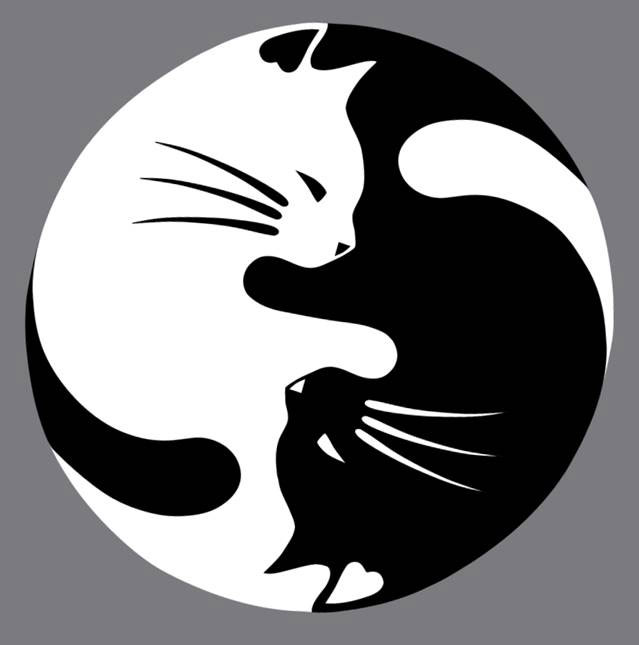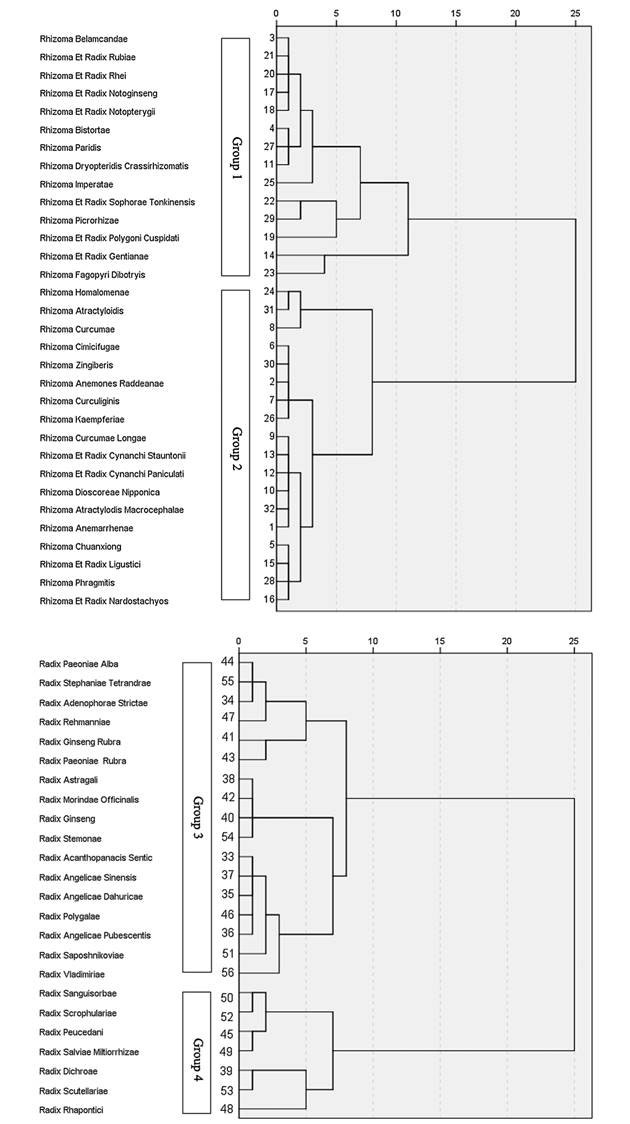For thousands of years, the principle of ‘yin and yang’ has dominated traditional Chinese medicine but these qualities have eluded all attempts at characterization until now Dr. Mae-Wan Ho

The Taoist concept of ‘yin and yang’ refers to a duality of apparently opposing qualities that complement each other to make a whole; it is a symbol of dynamic balance between opposites [1]: dark and light, cold and hot, damp and dry, female and male. For thousands of years, it has served as a major classification scheme for just about everything, especially food and traditional Chinese herbal medicines. For example, patients diagnosed with hot syndromes should be treated with cold herbs, and vice versa.
Much effort has been dedicated to try and pin down the precise qualities of yin and yang or cold and hot in medicinal herbs. The Linnean classification system in the West fails to capture those qualities. Approaches based on identifying active ingredients are equally ineffective because it is most likely the combination of ingredients that matters. Techniques such as a variety of chromatography, mass spectrometry, ultraviolet and infrared spectrophotometry, and nuclear magnetic resonance have all been employed, but still failed to fully delineate the holistic qualities of cold and hot that have served traditional Chinese medicine so well for millennia.
Now, a research team in China appear to have finally succeeded [2] using the technique of delayed luminescence (DL), the long-lifetime ultra-weak photon emission from biological material after brief illumination with white or monochromatic light. The technique was pioneered by German quantum-biophysicist Fritz-Albert Popp [3], and has since been widely used for food quality, water quality, and research into cell biology including cancer [4, 5]. The team, led by Han Jinxiang at Shandong Medicinal Biotechnology Center of the Key Laboratory for Biotech-Drugs of the Ministry of Health, Shandong Academy of Medical Sciences, collaborated with Eduard van Wijk at the Sino-Dutch Centre for Preventive and Personalized Medicine/Centre for Photonics of Living Systems, Leiden University in the Netherlands, where the measurements for DL were done.
A total of 32 herbal rhizomes and 24 herbal roots from the Chinese pharmacopoeia were tested. These grow in the ground and their shape and texture are very similar. They are all from the Jinan Jianlian Chinese medicinal herb store and identified by Prof Zhang Yuanbin of Shandong Academic of Medical Sciences. The samples were ground to a powder < 0.2mm diameter and dried at 20 + 1 ˚C for 16 h.
DL was measured by placing the sample in a 10 cm Petri dish inside a light-tight black chamber with a single opening to a cooled single-photon-count photomultiplier tube closed by a shutter. The sample was excited by exposure to LED light for 10 s, and DL recorded at 100 ms periods for a total of 20 s after excitation,
The kinetics of DL can be expressed as
where I0 is the initial intensity of DL after excitation, β is a rate constant of DL decay, t is time after excitation, and τ is a coherence-time constant of DL. The value of I0, β, and τ are obtained by fitting the experimental data using STATISTICA. Based on Eq (1), further parameters were calculated:
where N1, the total photon counts, and T1, the decay time of DL, can be obtained from the experimental data. T represents the time when the intensity decreases to I0/e. The photon distribution P(n) (frequency of occurrence of an interval of photon counts) is used to calculate the statistic entropy S, summed over the number of data points of DL before it decays back to background level.
The statistical data were normalized first, and the parameters converted to logarithmic form. A hierarchical cluster analysis was carried out to classify all herbal samples into groups based on similarity, mathematically quantified as squared distances. In hierarchical clustering, the most similar objects are grouped first, and these groups are then further merged according to their similarities until all subgroups are fused into a single cluster. The resulting tree diagrams (dendrograms) are displayed in Figure 1.

Figure 1 Dendrograms of similarities among Chinese herbal medicines; top, rhizomes; bottom, roots
The 32 rhizome herbs were classified into two distinct groups 1 and 2, and the 24 root herbs into groups 3 and 4. Interestingly, Groups 1 and 4 are overwhelmingly ‘cold’ medicines (except two of them in Group1), while Groups 2 and 3 are predominantly ‘hot’ or ‘heat’ medicines (see Table 1).
Table 1 Cluster analysis classification versus traditional Chinese medical classification of Chinese herbs

The concept of h0t and cold has guided therapy in Chinese herbal medicine for 2 000 years, and despite many chemical and physical analyses, these qualities have remained undefined. For example, Codonopsis pilosula (dang shen or poor man’s ginseng), American ginseng and ginseng, all have the therapeutic function of ‘qi-tonifying’ according to Chinese medicine theory, but the chemical profiles of these herbs are very different.
Delayed luminescence is based on a theory of the coherent quantum field in living systems (see [3, 4]), which may be why it is capable of defining holistic qualities of the whole plant (even though the plant has been pulverised and dried). There are >8 900 Chinese herbs used in traditional Chinese medicine, so the sample analysed is only a small fraction. It would be interesting to see if the analysis applies more widely, and if refinements could be made on the basis of therapeutic usage.
Article first published 12/10/15
Comments are now closed for this article
There are 5 comments on this article.
Jens Bucher Comment left 13th October 2015 00:12:25
we need now an instrument that indicates whether our attitudes, thoughts and actions are building up, harmonizing our chi or depredating, weakening or destabilizing it - it would be fascinating to have such a tool while helping people to change their lifestyle in face of a cancer condition
Bob Schubring Comment left 13th October 2015 02:02:41
For 114 years, we've known that luminescence obeyed Planck's constant, relating wavelength (i.e., color), to energy absorbed or emitted. But nowhere in the Modern Physics universe, from Planck to Einstein to Heisenberg, is there an explanation of the time lag in light emission. Here's an example of substances whose emission time-lag falls into two groups. This suggests that there are orderly processes going on within atoms, that we cannot observe directly, for lack of a way to detect electron motion without changing the motion. Perhaps it only seems that electron motion in molecular orbitals is random.
Todd Millions Comment left 14th October 2015 05:05:11
Fascinating -Thanx for this report. As well as the roots- There is a whole theory of diet in the Chinese tradition. Some of the recommendations are for 'Health Harmony'. Have other foods than roots being tested using this? Other roots than the medical ones? The 'Tiger lily' was found was widespread in Southern China where I'm informed its Food. 150 years ago it was confirmed too be the same lily found in the Cypress Hills of SW Saskatchewan-and NO where else! These hills are a semi alpine biome that poked up above the surrounding ice sheet during the last glaciation-so things are weird here about (the only native earthworm for N. America!-no findings of others elsewhere.).But how this would have come about I haven't a clue- If it was a paleo medical herb- It may explain(or not).Another -'weed' found hereabout, Canadian Flea Bane was greatly appreciated in China as an anti diarrhea treatment. This use was never noted where it was found too my (imperfect) knowledge.
David Collier Comment left 14th October 2015 17:05:51
I wonder if hot condiments e.g. peppers & chillies would show up as 'hot' in the experimental sense as described here.
A herbalist has told me to avoid them based on my astrology in which Aries is a strong influence, and it is true I can't manage highly spiced food anyway.
Perhaps these things can contribute to to a Grand United Theory, notwithstanding my particular gut?
brian lamb Comment left 29th October 2015 19:07:35
As a medical herbalist in practice for 30 years, this insight is most interesting and reinforces the traditional practice of the art of herbal combinations - a skill only obtained after many years. However, some botanical agents need to be prescribed singly as in the case of the adaptogenic herb Rhodiola rosea.
In a study at University College Utrecht in 2009, three adaptogenic herbs combined into a single supplement known as ADAPT-232: Eleutherococcus (Siberian Ginseng) + Schizandra chinensis + Rhodiola rosea (Rose Root) were examined for human ultra-weak photon emission. Three volunteer groups of 10 people took the ADAPT-232 supplement for one week, another group took a placebo and the third group took a Rhodiola pill. After one week all three groups were examined for photon emission and questioned regarding decrease in fatigue. There was no difference between the ADAPT-232 and placebo regarding either decrease in fatigue or reduction in photon emission from the dorsal side of their hands, but the Rhodiola group showed significant decrease in fatigue and in photon emission.
Unfortunately, many suppliers of supplements provide self-canceling pills due to lack of understanding of the dynamics of traditional wisdom.
Finally, one of the Chinese roots mentioned in the ISIS report, namely Rehmannia, is fascinating. In Chinese tradition, this herb is prescribed uncured and known as glutinous Rehmannia or 'New Place'; it is also prescribed cured by repetitive steaming and drying when it is known as steamed glutinous Rehmannia or 'Old Place'. The two are seen as entirely different in class and action, hence the famous riddle: "I have visited a new place and returned to an old place, what herb am I?" The answer is: "I am glutinous Rehmannia".
May we see more investigations in the quest of healing by these valuable medicinal herbs.